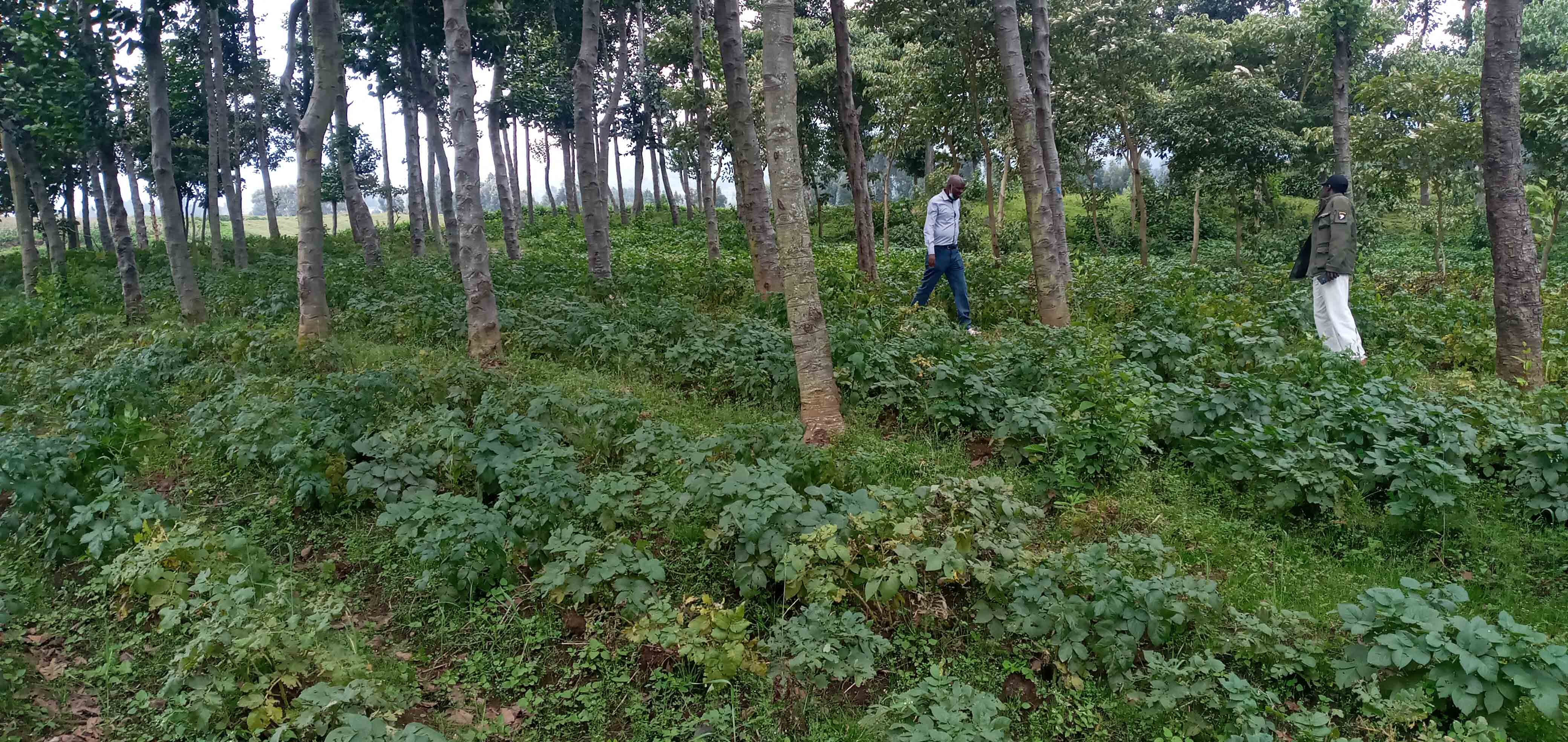A new study has found that Alnus trees in agroforestry systems significantly contribute to capturing and storing carbon dioxide from the atmosphere.
Researchers discovered that the fast-growing Alnus tree, common in most Rwandan households, capture substantial amounts of carbon in aboveground biomass-live or dead matter from trees-with amounts varying depending on the age and elevation of the tree.
The study, supported through an ACIAR-funded project, was conducted in the highlands of Rwanda and measured 1767 Alnus trees from a land area of 13 ha covering 84 farms. Most of the trees sampled were planted between 2009 and 2018, with a large portion planted through the Trees for Food Security project.
Alnus is widely used in agroforestry systems across the globe and is believed to provide multiple benefits to ecosystems. However, there's little evidence in existing agroforestry literature to support the benefits, particularly in Rwanda. The latest research assessed the potential of Alnus-based agroforestry for carbon sequestration and other ecosystem services in the country.

Researchers hope that the newfound knowledge will lead to better guidance for farmers on tree management practices that maximise carbon capture.
'Our findings show that carbon stocks in Alnus trees are higher at intermediate elevations and lower at higher elevations, while older trees store more carbon compared to younger trees,' says Athanase Cyamweshi, the lead author and researcher from Rwanda Agriculture and Animal Resources Development Board and PhD student at Jomo Kenyatta University of Agriculture and Technology.
The dominant Alnus trees are mostly planted along contour hedges or scattered within the farms to provide stakes for climbing beans, timber and firewood, soil erosion control, green mature and improving soil fertility.
However, the younger trees face challenges in continued carbon storage as the farmers' pressure on planted trees to satisfy their needs in tree products intensifies.
'In the study area, our observations in the field show that farmers pruned trees leaving only 30% of the crown. As such, when trees grow larger, the contribution of wood biomass to the aboveground biomass increases at the expense of leaf biomass. We found that much of the biomass of Alnus was held in the stem and lower biomass in branches and leaves,' says Athanase.
This can be attributed to farmer management practices such as pruning, coppicing, and pollarding. Farmers remove branches to reduce light competition between trees and understory crops and as part of harvesting wood for firewood and stakes for climbing beans. Such tree management practices adversely affect the Alnus tree potential to capture and store atmospheric carbon, notwithstanding the other benefits of tree products.
'We need to focus more on improving farmers' knowledge of agroforestry tree management practices to enhance tree growth and biomass productivity,' says Prof Catherine Muthuri, World Agroforestry (ICRAF) Regional Convener East Africa and Country Coordinator Kenya.
'With Alnus being the most abundant tree in the region, there is a need to diversify tree species for provision of stakes, timber and firewood to reduce farmers' pressure on Alnus trees and maintain them for long duration on farmlands,' says Prof Muthuri.
Agroforestry features prominently in Rwanda's national policies on land use, climate change, agriculture, and forestry. It has been identified as one of the key approaches for increasing agricultural productivity while harnessing tree ecosystem services.
Planting Alnus trees on farms can meet local needs for climbing-bean stakes, improving wood and soil, and the global need for climate change regulation.
The study, published in Springer, is part of the research outputs from the ACIAR-funded and ICRAF implemented Trees for Food Security project.






